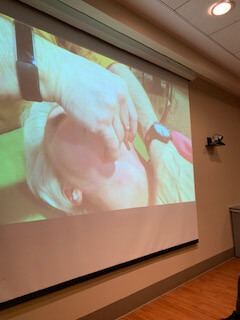Learn how massage can improve your life

Walt Fritz’s Myofascial Release Seminar for Neck/Voice/Swallowing Disorders Before I get into the meat of this, there are a few things to note. This class, ‘Myofascial Release Seminar for neck/voice/swallowing disorders,’ is named for the conditions that may occur in the area being treated, as well as how the touching is done. While the title is […]
This blog was inspired by the fact that we spend a lot of time trending hard and obsessing over modalities. We debate whether they are ‘right’ or ‘wrong’ and what we as therapists should be doing now. Recently I talked with a very aggressive young therapist who was willing to alienate many of his current […]
A short demonstration of the intra-oral massage therapy treatment on TMJ for Tempro-mandibular Joint dysfunction at Body Mechanics Orthopedic massage NYC. The treatment combines fascia work , massage, active releases and trigger point. The intra-oral work does not stand alone but is meant to be part of a full upper body treatment in order to […]